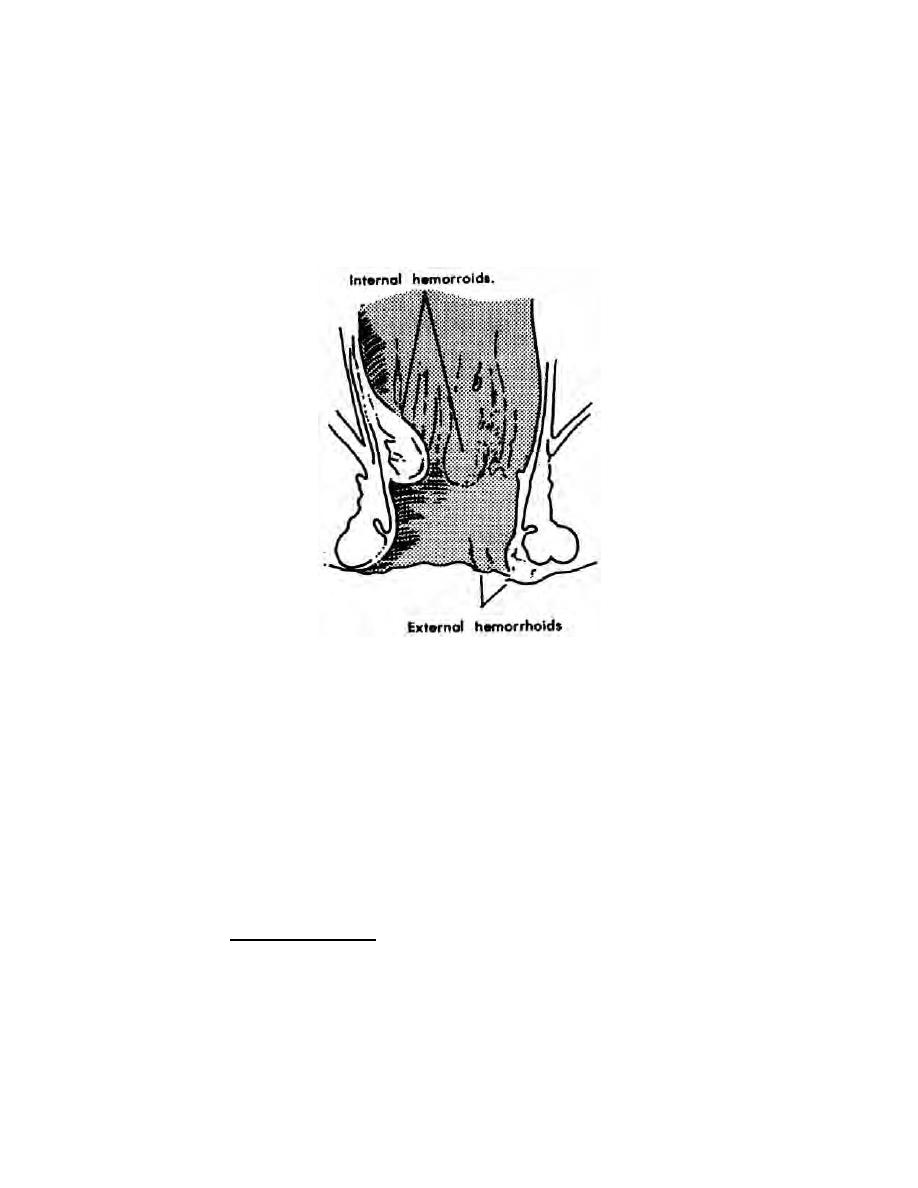
3-15. HEMORRHOIDS
a. Definition. Hemorrhoids (piles) are enlarged and varicose condition of the
veins of the lower portion of the rectum and the tissues about the anus. These varicose
veins may occur outside the anal sphincter (external hemorrhoids) or inside the anal
sphincter (internal hemorrhoids). External hemorrhoids are sensitive and painful.
Internal hemorrhoids are covered with mucous tissues and are insensitive to pain.
Figure 3-11. Internal and eternal hemorrhoids.
b. Etiology. Causes of hemorrhoids include straining at stools, constipation,
and prolonged sitting, standing, or squatting. The pressure of pregnancy causes
hemorrhoids which usually disappear when the pregnancy ends. Anal infections are
another cause of hemorrhoids.
c. Sign and Symptoms. Anal discomfort and pain may become more severe
when the patient has a bowel movement. Itching (pruritus) is another uncomfortable
symptom. Mild hemorrhaging may occur.
d. Treatment.
(1) General treatment. In most cases, conservative treatment of
hemorrhoids is successful. Some hemorrhoids may be relieved by Sitz bath which
reduces local pain, swelling, or infection. Suppositories containing hydrochloric acid
lessen the discomfort of pain and itching. Anesthetic ointment such as Dibucaine
applied to the affected area may be used. Some commercial products cause irritation to
the hemorrhoids. If possible, the patient should rest with his head lower than the rest of
his body to relieve the pressure on the hemorrhoids.
MD0581
3-29


 Previous Page
Previous Page
